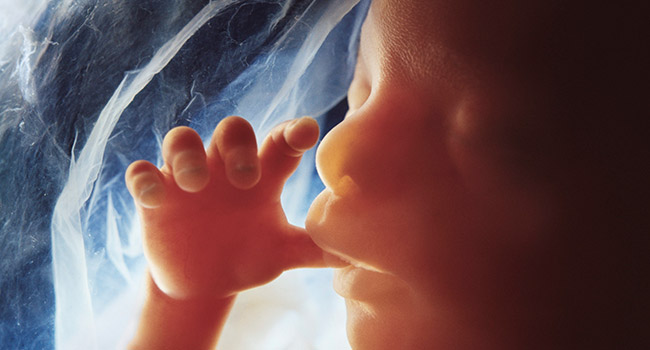
Whether thwarting our criminal efforts or unlocking our phones, our fingerprints play an important role in our identity. Even identical twins have non-identical fingerprints! But by nature, the swirls and ridges on our fingertips aren’t meant to identify us, but instead serve the more mundane purpose of aiding touch. So what triggers their one-of-a-kind design?
Let’s back up a second and look at what fingerprints actually are. The swirls and whorls we see are actually long mountain ranges (called friction ridges) that rise above the surface of our skin. Their peaks reflect the underlying interface that forms between the layers of our skin. More specifically, places where the outer layer (epidermis) connects to the lower dermis. The layer between the epidermis and the dermis grows at a faster rate, causing it to fold in and upon itself. Thus, the connections between the epidermis and the dermis are bumpy and irregular.

The connections between the layers help to amplify vibrations from the surface of the skin, passing them deeper into our skin where they are felt more strongly. Thus, fingerprints give us the hypersensitive touch we need to discern small differences in texture and movement.
People have also long believed that fingerprints aid in friction (resistance to slipping), although some experiments have shown no mechanical advantage. However, it’s still commonly held that the ridges act like the treads on a tire, channeling moisture and oil away from the tops of the ridges, giving us a stronger grip on surfaces.
The collection of oil and dead skin cells that remain in the valleys are what is left behind when we touch a glass (or an incriminating murder weapon).

How Fingertips Are Formed
Every human is a product of their genetics and their environment. Yet, we exist within a spectrum of possibilities. To put it simply, a developing human follows a set of instructions written in our DNA, which is in itself a combination of words and phrases (genes) from each of our parents’ instruction manuals. That mixing of instructions is what results in our uniqueness. However, it’s all coming from within the same basic recipe book for human beings. So while we may have blue eyes or green eyes, no one has eyes in the back of their head (except for my third grade teacher).
Even within a limited set of genes, the randomness can lead to incredible variance. But with fingerprints, there is an INFINITE number of possibilities. If it were only up to genetics, the variance should be less extreme – not to mention, identical twins would share identical prints.
When ‘nature’ doesn’t act alone, ‘nurture’ is often part of the picture. That is, environmental factors also play an important role in our growth and development. And surprisingly, fingerprints are affected by the environment that we lived in before we were even born!

Remember how fingerprints are formed by the interacting tissue layers of our skin? Those deeper skin folds and connections are actually coded by our DNA, so the basis of our fingerprints does start out as genetic. That’s why you probably share similar fingerprint patterns as your family.
However, fetal growth is not a uniform process. Instead, some layers of tissue grow at different speeds, triggered by the flow of chemical signals. Like twigs floating down a river rapids, those paths are somewhat left up to chance. The differences aren’t always that dramatic, but certain areas of tissue are signaled to grow faster while others lag behind. As they do, the growing tissues push and pull on their neighbors, and this warps the fingerprint’s folds and ridges even more. In addition, the growth rate and resulting size of other nearby structures, such as your blood vessels, will impact skin tissue growth.
Even more interesting, because the fingertips are so exposed, they are often pressed up against the womb as the fetus grows. The pressure on the developing skin shapes the fingertip growth as well. Halfway through fetal development (about 17 weeks) the skin growth is complete and your fingerprints are locked in.
Since no two fetuses develop in the same chemical flow or move the exact same way within the womb, no two babies are born with the same fingerprints – even if the underlying DNA that designed their skin tissue is identical.
So in that way, your unique fingerprints are both a product of your heritage and a snapshot of your life inside the womb!
Further Reading
More science behind how fingerprints help with touch
8 Most Common Fingerprint Patterns
